For some people, the name “Taos” evokes an artists’ colony. For others, a ski resort, and for still others, the oldest continuously inhabited community in the country.

All of these are accurate.

I first visited Taos in the mid-1980’s. I was in high school at the time, and my mother organized a spring break trip to New Mexico for us. I fell in love with adobe architecture, Native American jewelry and art, and the wide-open sagebrush expanses the state has to offer.

I only went back to the area once after that, about 6 or 7 years later, when I graduated from college. So, last month, when I needed to travel from western Colorado to the Front Range, I decided to make a detour through this town that had entranced my younger self.
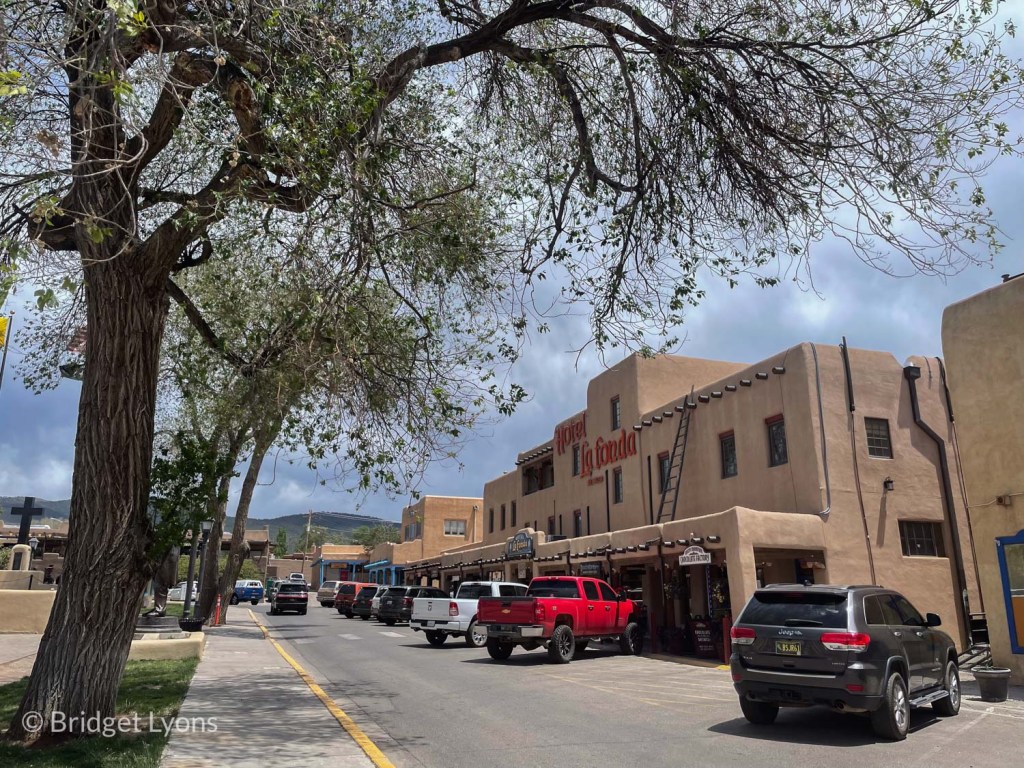
Upon arrival, the first thing I did was head to the main plaza in search of art—which is, of course, not hard to do. Although Taos only has about 6500 residents, it has 80 art galleries and 3 museums.

Many of these are located on the several streets surrounding the plaza, and most of them are housed in adobe buildings. You could easily spend an entire day looking at everything from traditional oil landscapes to bold, modern screenprints and monolithic stone sculptures.







There are murals, tile assemblages, wall frescoes, textiles installations, and metal sculptures—in other words, just about any art form you can think of.

This town’s relationship with creativity is a long one, as artists of European descent first began settling there in the late 19th century. The Taos Society of Artists was founded in 1915, and it soon boasted members such as Georgia O’Keefe, D.H. Lawrence, and Ansel Adams.

Of course, these folks were inspired by other artists who had been living in the area much, much longer than they had: the members of the indigenous communities who still reside in northern New Mexico.

They are considered to be descendants of the Puebloan populations—Anasazi people who built impressive adobe structures throughout the southwest and created the gorgeous black and white/black and orange pottery that can be seen in numerous southwestern museums.

The Anasazi also maintained a sophisticated trade network with a road system to support it, and their agricultural techniques enabled them to support densely populated villages.

Archaeologists consider the “peak” of Anasazi culture to have been around 1000 or 1100 CE. By the late 15th century, they had all but disappeared. Climate change, soil depredation, Old World diseases, and outright massacres by Europeans are among the causes of their decline.
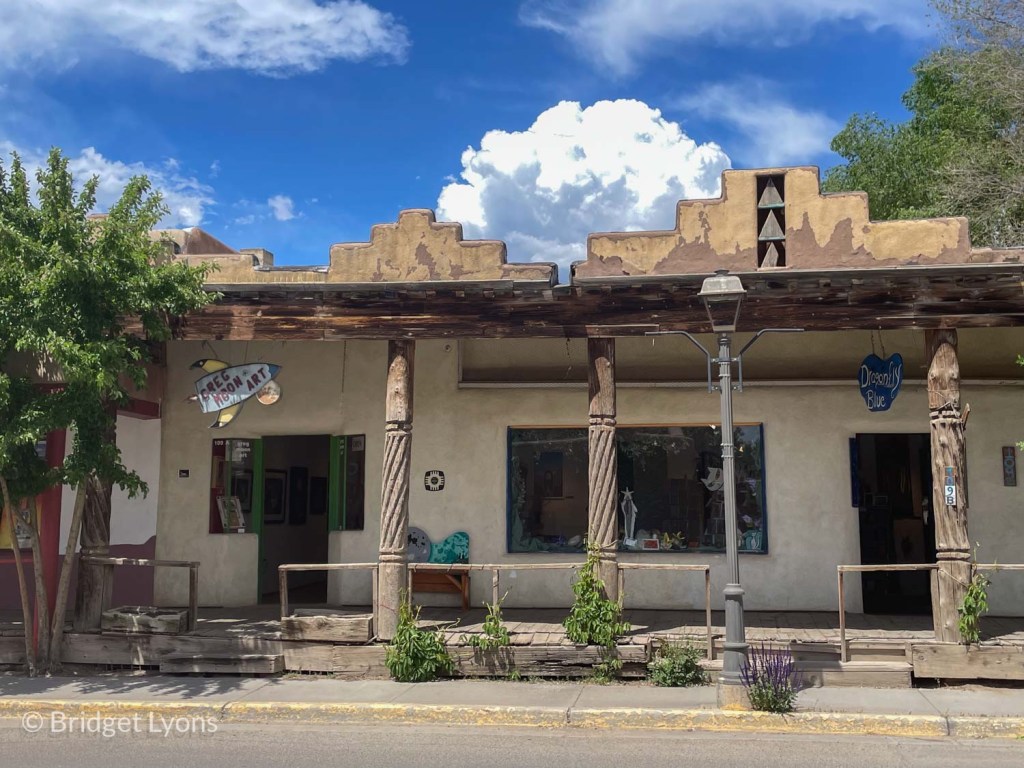
However, not all of the southwest’s indigenous population vanished, and their descendants now live in a number of villages in the Taos area. One of these is the Taos Pueblo, a UNESCO World Heritage site on the outskirts of town that has probably been painted or photographed by every artist who has come through.

Taos Pueblo was built sometime between 1000 and 1450 CE. The two main houses, called the North House (Hlaumma) and South House (Hlaukwima) are between one and five stories high, with upper floor rooms accessed by ladders.
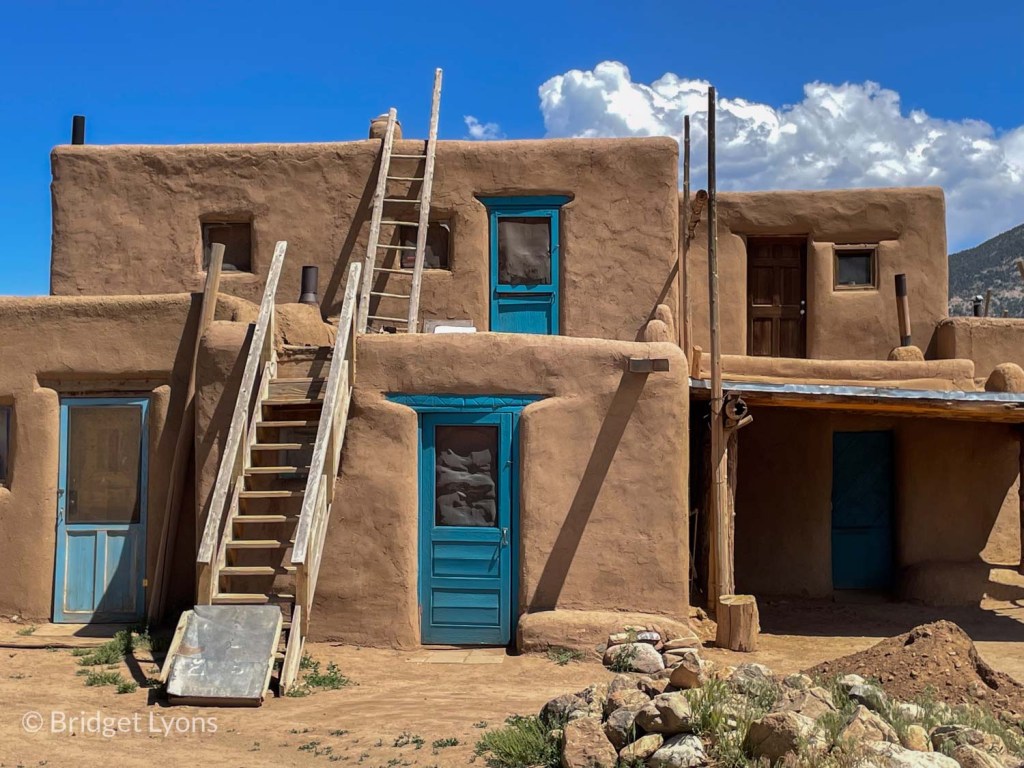
Because there is no electricity or running water in these residences, only about 150 people live in them year round. About 1800 additional people of Puebloan descent live in the surrounding area.

Between the two main houses are the plaza area, with its ovens and drying racks.
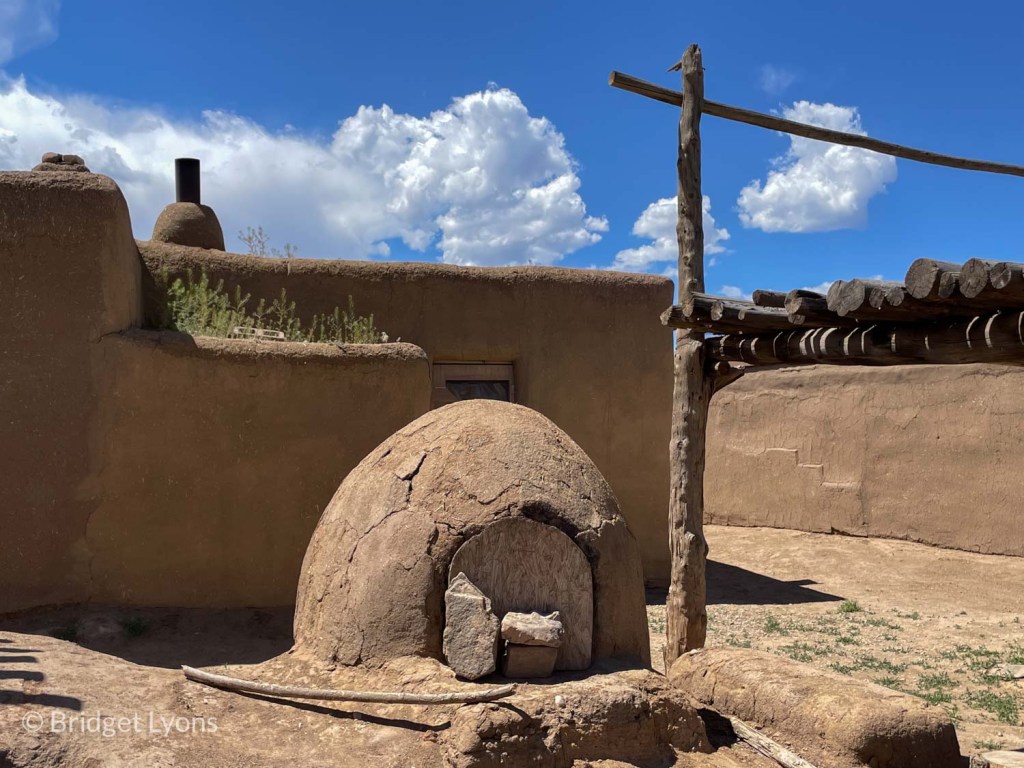
Red Willow Creek runs right through the village’s center, coming down from the Blue Lake area of the Sangre de Christo Mountains. This area was taken by the US Forest Service in the 1900’s but returned to the Taos Pueblo community in 1970 after a long legal battle.
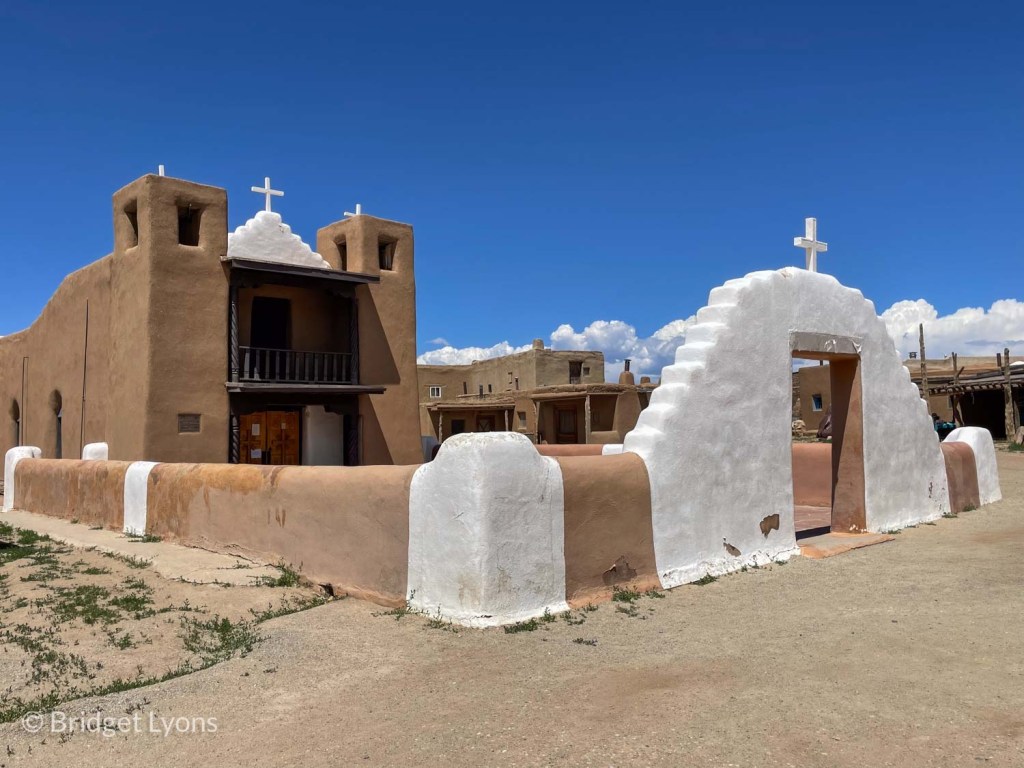
The pueblo itself is a work of art, with its clean lines and beautiful, earthy colors. St. Jerome Church, built in 1850 after its predecessor was burned in a revolt, is particularly striking. But the architecture is not the only art in the settlement; many small galleries are nestled into corners of the buildings, where residents sell traditional, pottery, jewelry, leather goods, and drums.
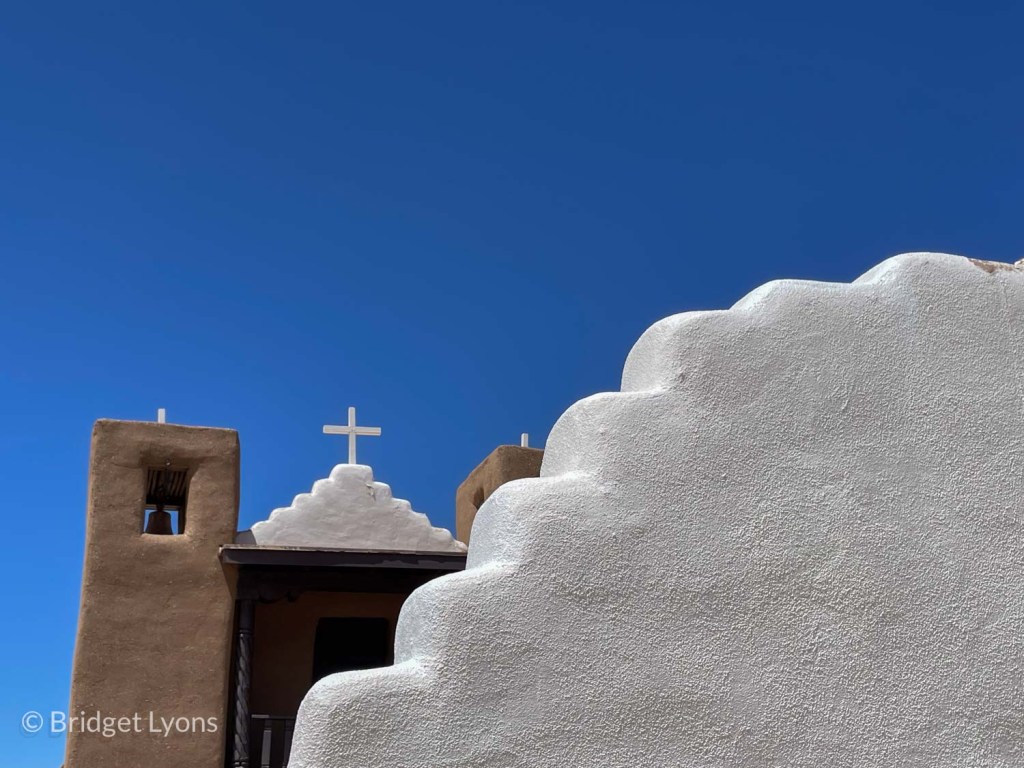
Taos Pueblo is major tourist attraction nowadays, and I was not the only person wandering around trying to capture images at just the right angle, with just the right configuration of shadows.

I’d like to think we were all making our own very tiny version of Taos art, on our cameras and phones—and that the centuries of Puebloan people who inspired artists of all walks of life would appreciate that.


Hi Bridget, I’ve never been to Taos, but after reading about it in your essay and seeing your photos, it’s definitely on my list. As always, I enjoyed your descriptions and thoughts.
Best to you, Christina
LikeLike